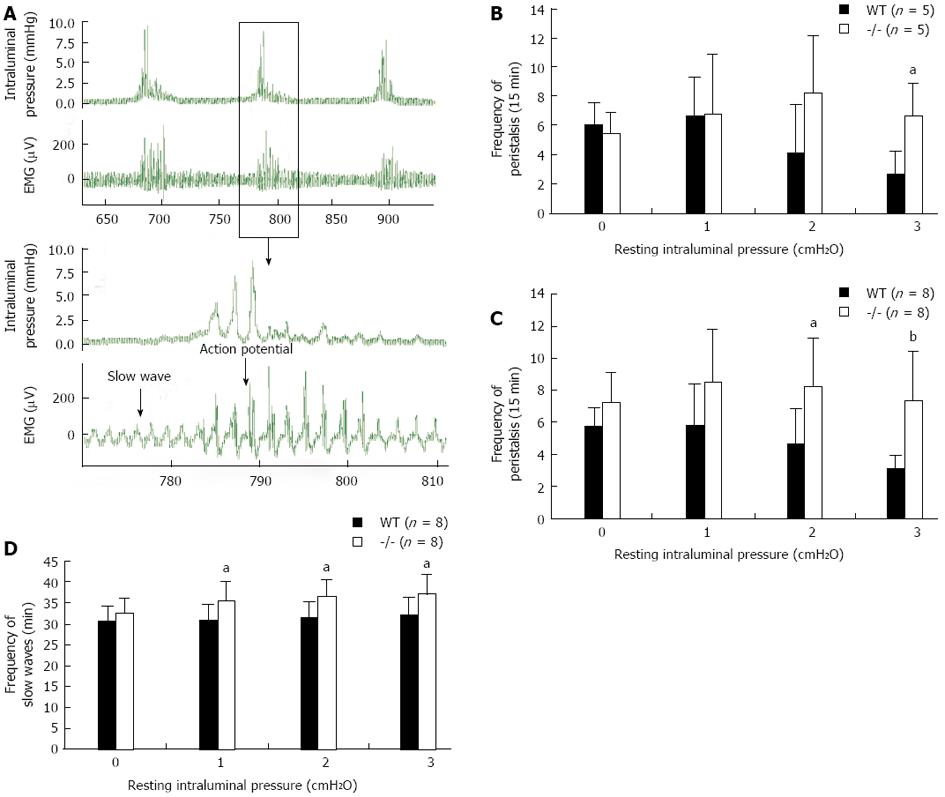Copyright
©2014 Baishideng Publishing Group Co.
World J Gastroenterol. Jan 14, 2014; 20(2): 498-508
Published online Jan 14, 2014. doi: 10.3748/wjg.v20.i2.498
Published online Jan 14, 2014. doi: 10.3748/wjg.v20.i2.498
Figure 4 Gpr128 deficiency leads to increased frequency of intestinal contraction.
A: The raw traces of intraluminal pressure of a jejunum segment of Gpr128-/- mice and the simultaneously recorded extracellular electrical potential from the gut wall. The lower panel of A shows an expanded view of the recording within the square of the upper panel; B: Frequency of peristalsis in wild-type (WT) and Gpr128-/- mice of 8 wk. The frequency of peristalsis was increased in Gpr128-/- mice at a resting intraluminal pressure of 3 cmH2O (n = 5, P = 0.0137); C: Frequency of peristalsis in WT and Gpr128-/- mice of 32 wk. The frequency of peristalsis was increased in Gpr128-/- mice at resting intraluminal pressures of 2 and 3 cmH2O (n = 8, 2 cmH2O: P = 0.0166, 3 cmH2O: P = 0.0020); D: Frequency of slow waves in WT and Gpr128-/- mice of 32 wk. The frequency of slow waves was increased in Gpr128-/- mice at resting intraluminal pressures of 1, 2 and 3 cmH2O (n = 8, 1 cmH2O: P = 0.0303, 2 cmH2O: P = 0.0271, and 3 cmH2O: P = 0.0402). All values are mean ± SD (aP < 0.05, bP < 0.01 vs wild-type group).
-
Citation: Ni YY, Chen Y, Lu SY, Sun BY, Wang F, Wu XL, Dang SY, Zhang GH, Zhang HX, Kuang Y, Fei J, Gu MM, Rong WF, Wang ZG. Deletion of
Gpr128 results in weight loss and increased intestinal contraction frequency. World J Gastroenterol 2014; 20(2): 498-508 - URL: https://www.wjgnet.com/1007-9327/full/v20/i2/498.htm
- DOI: https://dx.doi.org/10.3748/wjg.v20.i2.498









